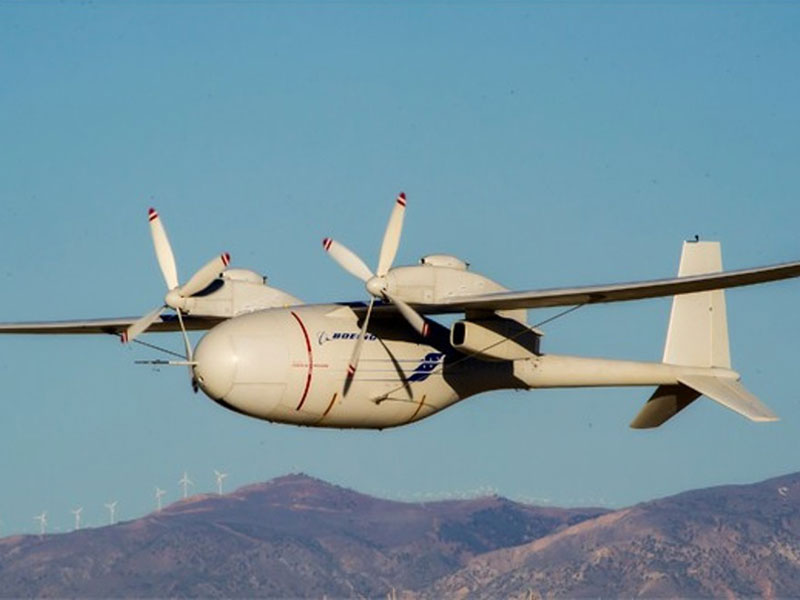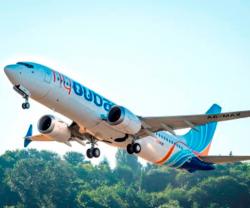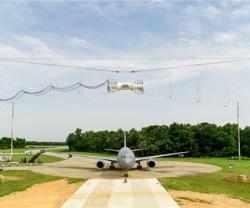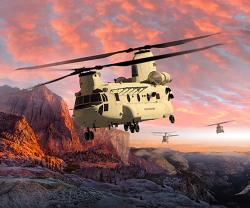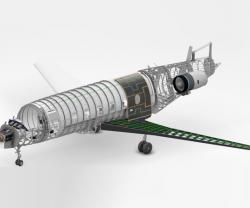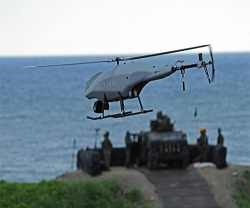Boeing’s Phantom Eye Completes 2nd Flight
27.02.2013 North America
Boeing's liquid hydrogen-powered Phantom Eye unmanned airborne system completed its second flight on February 25, demonstrating capabilities that will allow it to perform intelligence, surveillance and reconnaissance (ISR) missions for up to four days without refueling.
During the flight, at NASA's Dryden Flight Research Center at Edwards Air Force Base, Calif., Phantom Eye climbed above an altitude of 8,000 feet and remained aloft for 66 minutes at a cruising speed of 62 knots before landing. The aircraft exceeded what it achieved last year during its first flight when it flew at an altitude of 4,080 feet and remained aloft for 28 minutes.
“Today’s combination of geopolitical and economic issues makes Phantom Eye's capabilities, affordability and flexibility very attractive to our global customers,” said Darryl Davis, Boeing Phantom Works President.
“No other system holds the promise of offering on-demand, persistent ISR and communications to any region in the world, rapidly responding to natural disasters and national security issues,” he added.
Boeing is self-funding development of the environmentally responsible Phantom Eye, which generates only water as a byproduct of its propulsion system.
“This flight, in a more demanding high-altitude flight envelope, successfully demonstrated Phantom Eye's maneuverability, endurance and landing capabilities,” said Drew Mallow, Phantom Eye Program Manager.
Following the first flight, Boeing upgraded the aircraft's software and hardware, including the landing gear. The upgrades paid off in the form of a picture-perfect landing.
The Phantom Eye demonstrator is capable of carrying a 450-pound payload while operating for up to four days at altitudes of up to 65,000 feet.
During the flight, at NASA's Dryden Flight Research Center at Edwards Air Force Base, Calif., Phantom Eye climbed above an altitude of 8,000 feet and remained aloft for 66 minutes at a cruising speed of 62 knots before landing. The aircraft exceeded what it achieved last year during its first flight when it flew at an altitude of 4,080 feet and remained aloft for 28 minutes.
“Today’s combination of geopolitical and economic issues makes Phantom Eye's capabilities, affordability and flexibility very attractive to our global customers,” said Darryl Davis, Boeing Phantom Works President.
“No other system holds the promise of offering on-demand, persistent ISR and communications to any region in the world, rapidly responding to natural disasters and national security issues,” he added.
Boeing is self-funding development of the environmentally responsible Phantom Eye, which generates only water as a byproduct of its propulsion system.
“This flight, in a more demanding high-altitude flight envelope, successfully demonstrated Phantom Eye's maneuverability, endurance and landing capabilities,” said Drew Mallow, Phantom Eye Program Manager.
Following the first flight, Boeing upgraded the aircraft's software and hardware, including the landing gear. The upgrades paid off in the form of a picture-perfect landing.
The Phantom Eye demonstrator is capable of carrying a 450-pound payload while operating for up to four days at altitudes of up to 65,000 feet.
Previous PostBoeing Acquires CPU Tech's Acalis Business
Latest news
Latest events
DSEI 2025
09 - 12 Sep 2025Excel, London - United KingdomIntersec Saudi Arabia
29 Sep - 01 Oct 2025Riyadh International Exhibition & Convention Centre - Saudi ArabiaDubai International Air Chiefs’ Conference (DIACC 2025)
16 Nov 2025Atlantis, The Palm Dubai - United Arab EmiratesDubai Airshow
17 - 21 Nov 2025Dubai World Central (DWC) - United Arab Emirates

